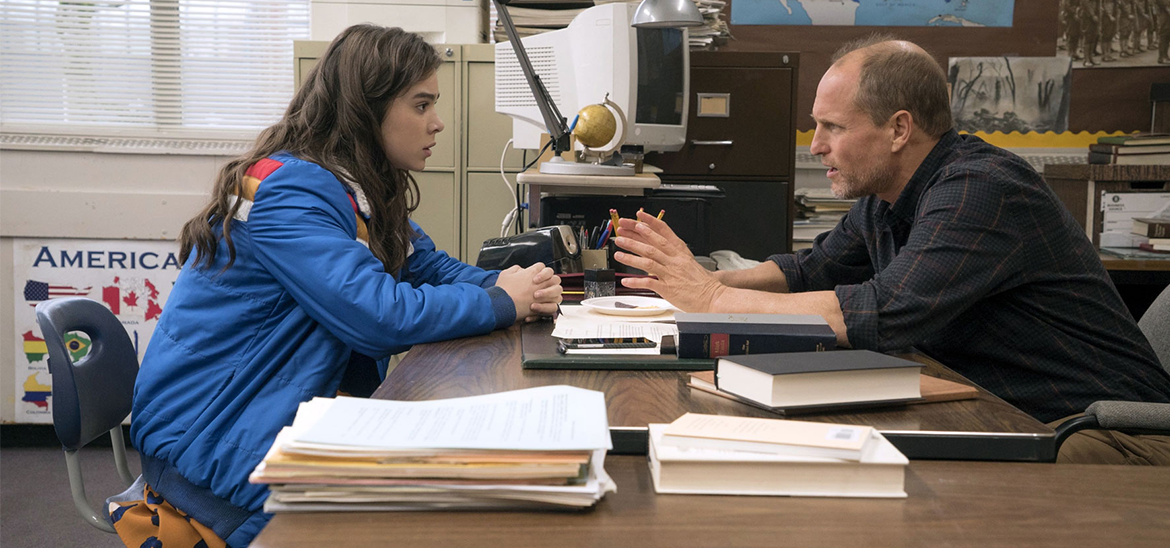Into Film Clubs
Find out everything you need to know about starting an Into Film Club.



The teen high-school film is a well-worn genre, but one that we love to watch and explore new interpretations of. The newest kid on the block is The Edge of Seventeen, providing a fresh twist on the genre and its conventions. It sees Nadine (superbly played by Hailee Steinfeld) struggling with the societal pressures of being a teenager, which are only exacerbated when her best - and only - friend begins to date her older brother. Nadine's world soon spirals out of control, and her actions become increasingly reckless, with seemingly little regard for those around her.
For an audience to relate to and empathise with its protagonist, the film must balance its tone - which veers from dark comedy to melancholic drama - in a skilful way; a trick that some of its contemporaries have struggled to pull off. The connections between the central characters are key to this success. For instance, Nadine's relationship with her teacher and confidante Mr. Bruner (Woody Harrelson), one of the few people in her life who appears to be on her level, is one built on witty ripostes over feelings or sentiment. Cast in the role of teasing sparring partner, simply his presence as an adversary is enough to enliven Nadine's spirit.
Perhaps the most significant aspect of the film is its unflinching portrayal and examination of teenage mental health. As the narrative progresses, it becomes clear that Nadine is not the archetypal teenager often represented in other films of this type, noticeably lacking the associated jovial disposition and apparently frivolous issues to overcome. Nor does The Edge of Seventeen treat her or her peers - who are equally well-rounded and complex - in such a way. Instead, the film shines a light on the kind of desperation which can come with isolation and depression, without taking any of the strength or agency away from its central character.
Other films suitable for this same age group (audiences aged 14 and older) include The Perks of Being a Wallflower, a film of the same ilk that focuses on serious subjects with an equal amount of care and attention. More recently, anime A Silent Voice also juggled deeper themes of disability, bullying and suicide throughout teenage life, while Australian Claymation Mary and Max similarly mixed humour and tragedy to superb effect. When Marnie Was There, a Studio Ghibli animation, is another film which adopts a more reflective approach in its storytelling, with The Edge of Seventeen's Hailee Steinfeld happening to voice protagonist Anna in the English language dubbed version.
Although The Edge of Seventeen is inventive in its approach, it owes plenty to certain trendsetters which came before it. A film which it has lots in common with, for example, is Easy A. Both films have a somewhat sardonic tone, and Olive's playful relationship with her parents in the latter - particularly her father - is mirrored by the spirited student-teacher witticisms in the former. Many modern high-school characters are also influenced by Juno and its cerebral, savvy dialogue (penned by Diablo Cody); another film which refused to dumb down its primary themes. Looming in the background, as is always the case with this genre, are the films of John Hughes, particularly the melancholy streak which runs through the otherwise fun-filled Ferris Bueller's Day Off.
One wonders whether an increased female presence and voice in the film industry has allowed for more diverse, nuanced and creative storytelling, be it Diablo Cody's writing of Juno or the more progressive characters shown on screen in films such as Easy A. The Edge of Seventeen is in fact the directorial debut of female filmmaker Kelly Fremon Craig, who also wrote the screenplay, and who provides subtle surprises at every turn. Krista, Nadine's best friend, is never revealed to be heartless for dating her older brother Darian, and neither is he portrayed as creepy or uncaring. In this film, characters defy our expectations, as does the plot itself, with a developing friendship between Nadine and admirer Erwin never turned into a "happy ever after" saviour-inflected love story.
As a result of this exploration, The Edge of Seventeen feels deep, real and relevant - broadening our outlook of adolescence and mental health - and bringing a much-needed fresh perspective, lingering longer in the mind as a consequence. It showcases a true-to-life teenage girl who is desperate - not for attention, but for salvation - yet is keenly aware that the world is not always built that way; a timely, valuable lesson for us all.
Discover more about how you can use this film with your students in our podcast.
Hear more from the Curation Team in our Into Film Recommends Podcast Series. Also available on itunes.
Viewing 4 of 4 related items.

Find out more about our streaming service, designed specifically for UK schools.